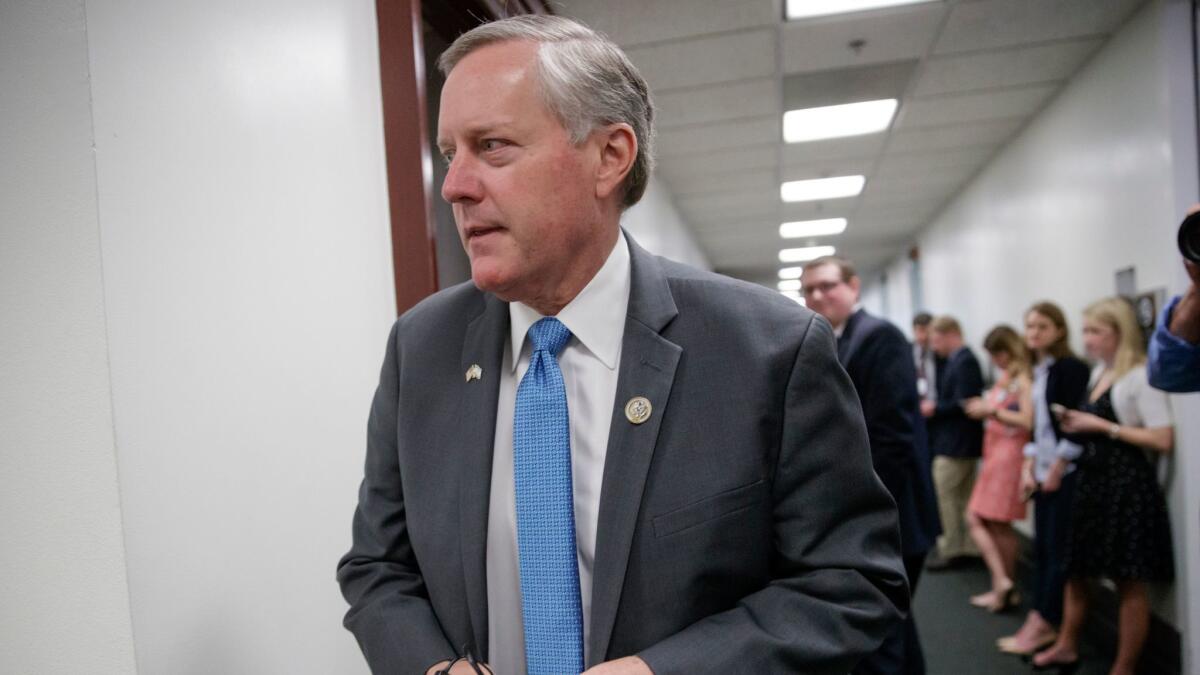Column: Republicans base their new Obamacare repeal on a Maine program they call a success. Don’t believe them

When our hard-working members of Congress return to work next week refreshed from their 18-day Easter recess, they’re planning to take up healthcare reform again.
This time, their Affordable Care Act repeal effort has been dressed up with a new provision known as “invisible risk sharing,” based on what they assert was a successful program in Maine.
They’re blowing smoke.
The Maine program, which was enacted in 2011, was only “successful” because it was backstopped by the Affordable Care Act. Even so, it was a disaster for older and rural residents, small businesses, and women.
People who were young and healthy benefited. But small businesses that had older employees or were in rural parts of the state really got hung out to dry.
— Garrett Martin, Maine Center for Economic Policy
The law led to reduced premiums, but also to “drastically reduced benefits, increased deductibles, and increased cost-sharing” compared to policies previously in force, according to an analysis by a pro-reform group. In other words, the savings from premiums were balanced, even overbalanced, by raising other costs for customers or eliminating benefits.
“People who were young and healthy certainly benefited,” says Garrett Martin, executive director of the Maine Center for Economic Policy. “But small businesses that had older employees or were in rural parts of the state really got hung out to dry.” Although insurance coverage in Maine has increased, he says, that is largely the result of the enactment of the Affordable Care Act, which went into effect and supplanted Maine’s program after Maine had run it for only a couple of years.
The version of Maine’s reform proposed by conservative House Republicans to rescue the Obamacare repeal effort could produce even worse outcomes. That’s the take-away from an analysis by the medical actuarial firm Milliman, which found that the proposal would reduce the number of uninsured Americans only by a couple of million and reduce premiums by as little as 1%, but cost the government as much as $17 billion in its first year. That’s money Congress isn’t likely to spend.
Before we go further, let’s define “invisible risk sharing” and figure out why it’s so alluring to the right-wing Freedom Caucus members who proposed it. The idea is a variation on the high-risk pools so admired by House Speaker Paul D. Ryan (R-Wis.) These pools peel the sickest and costliest patients out of the general insurance pool and pay for their care separately from public funds. The process, Ryan says, should lower premiums for the average insurance buyers because they’re no longer subsidizing the very sick. We’ve explained why Ryan’s description of high-risk pools is deceptive, and documented the sorry performance of such risk pools pre-Affordable Care Act.
The system isn’t that different from the reinsurance program in place during the Affordable Care Act’s first three years, when insurers got compensated by the government for enrollees who proved to need especially expensive treatment. As described by Mark Hall of the Brookings Institution and Nicholas Bagley of the University of Michigan, both systems are “‘invisible’ in the sense that high-cost subscribers are unaware of its existence.”
The wrinkle in the Republican plan is that it’s prospective rather than retrospective. The high-risk customers are identified when they sign up for coverage and then placed in the high-risk pool. Under reinsurance, they’re identified only after they start running up bills. If you’ve been diagnosed as a diabetic, the prospective system will know that and put you in the high-risk pool. But if you get an unexpected cancer diagnosis or are hit by a truck during the year, your insurer will be stuck with your full costs.
As Hall and Bagley explain, whether either approach will reduce premiums depends almost entirely on how much money is provided to cover the high-risk population. Milliman’s figures show that the House proposal wouldn’t come close to meeting the costs: The House has budgeted only $15 billion over nine years to pay for the plan, or about 10% of the projected costs.
That brings us back to Maine, ostensibly the model for the new GOP provision. The state’s 2011 reform loosened consumer protections on health insurance and regulatory review of new rates, and allowed insurers to consider geographic location in setting rates. The measure also established a prospective “invisible” risk-sharing program: Buyers of individual insurance had to fill out a questionnaire disclosing if they had suffered from any of 40 medical conditions including a variety of cancers, heart disease or stroke, high blood pressure, or Parkinson’s. The answers weren’t used to set premiums, but to place buyers in the high-risk pool. The pool was funded by a tax of $4 per month paid by every buyer of individual insurance, for a total of $22 million.
The most aggressive claims for the success of the Maine plan have come from representatives from the Maine Heritage Policy Center and the Foundation for Government Accountability, right-wing organizations linked to the American Legislative Exchange Council, the notorious ALEC, and the Koch brothers. In a March 7 article in Health Affairs proposing their system as a model for the nation, they claimed that “individuals’ premiums dropped by nearly 70 Percent for better plans.”
But that’s highly misleading. Lower premiums? An analysis of a public rate filing compiled by Consumers for Affordable Health Care, a Maine advocacy think tank, found that premiums rose for most customers of Anthem, the largest insurer in the market. While rates fell for all those younger than 40, they rose for 91% of policy holders 55 to 59 and 100% for those 60 and older.
“Better plans”? The new plan Anthem offered to replace its pre-2011 version charged deductibles of up to $12,000 each separately for in-network and non-network treatment, plus another $1,000 deductible for prescriptions. For many buyers, it raised out-of-pocket maximums and instituted co-pays of as much as 40% across the board. Mental health and substance abuse coverage was sharply curtailed. Maternity coverage was eliminated.
Supporters crow that individual insurance enrollment climbed as young buyers flowed into the market, but the burden on small businesses and older buyers was substantial. And, of course, a major buffering against the costs of the new policy came from the new tax of $4 per month per policyholder, which amounted to an enormous subsidy for the individual market of as much as 15% of total premiums. As for the macro outcome, Maine was one of only two states (New Jersey was the other) to see its uninsured rate actually climb from 2012 to 2013.
As for what lessons Congress should draw from Maine’s experience, they’re murky at best. Under Maine’s rules, insurers had the option of transferring potentially costly customers into the high-risk pool. But they had to turn over 90% of those customers’ premiums to the pool, while retaining liability for the first $10,000 of the customers’ bills. That acts as a disincentive to avoid sicker customers as well as an incentive to transfer only the sickest into the pool.
But the same effect can be achieved by the reinsurance program in the Affordable Care Act, which compensates insurers for the same sickest patients. At any rate, it forbids insurers from judging applicants on the basis of their health histories or medical prospects. Thanks in part to reinsurance, observe Hall and Bagley, “the evidence to date suggests that insurers aren’t competing over their ability to cherry-pick good risks or to lemon-drop bad ones.”
The bottom line is that almost any system of risk-sharing can work as long as it’s adequately funded. That’s the missing element in the revised GOP repeal plan. At a mere $1.7 billion per year, it’s hopelessly underfunded and certain to fail. That leaves one burning question that should be sounded about the plan once Congress returns to Washington: If you’re not serious about really improving the healthcare system, why pretend you are?
Keep up to date with Michael Hiltzik. Follow @hiltzikm on Twitter, see his Facebook page, or email [email protected].
Return to Michael Hiltzik’s blog.
MORE FROM MICHAEL HILTZIK:
Insurance CEOs haven’t been speaking up for Obamacare — except for one
Banks and credit card companies really hate class-action lawsuits. Will Trump help to outlaw them?
Trump’s proposal to eliminate the Social Security payroll tax may be his worst idea yet
More to Read
Sign up for Essential California
The most important California stories and recommendations in your inbox every morning.
You may occasionally receive promotional content from the Los Angeles Times.











